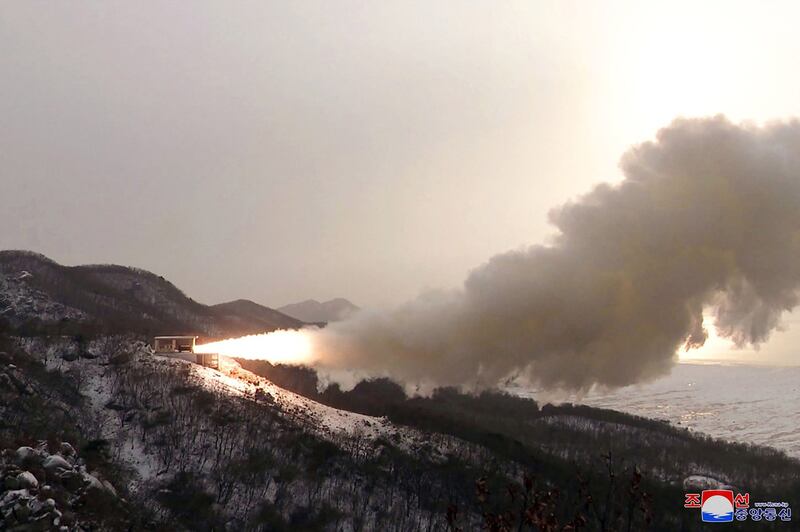North Korea may test a new type of solid-fuel intercontinental ballistic missile in February or in the first half of the year at the latest, a report by a South Korea-based researcher says.
North Korean state media announced in December that Kim Jong Un was present for test firings of a new engine developed to operate on solid fuel, which it claimed is capable of propelling the missile with 140-ton-force. In January, the engine underwent a combustion test.
Authorities told state media that the engine’s success could accelerate development of an entirely new missile, and included a solid-fuel ICBM as one of the top five tasks for its strategic weapons sector in its most recent five-year defense plan, adopted in 2021.
North Korea test launched missiles on New Year’s Eve and New Year’s Day. At a ceremony to commemorate the tests on New Year’s Eve, the country’s leader Kim Jong Un described the missiles as being “capable of carrying tactical nuclear weapons within the range of the entire Korean Peninsula.”
These signs point to North Korea testing not just the engine, but the whole missile in the near future, Shin Seung-ki, a research fellow at the Seoul-based Korea Institute for Defense Analyses, said in a report on North Korean rocket engine development.
Based on past precedent, North Korea tends to fire new missiles two to four months after they successfully complete a ground ejection test, he said.

Shin said that the completed new missile will likely have a maximum loading weight of approximately 2 tons. Based on that, he believes it will be a medium-sized missile that aims to load 5 to 6 strategic nuclear warheads weighing 300-400 kilograms (660-880 pounds) each.
North Korea's final goal, in Shin’s assessment, is to develop a large solid fuel engine ICBM with a range of around 10,000 km (6,213 miles) that can mount up to 10 strategic nuclear warheads.
Solid fuel is more stable and can be stored within missiles when they are not in use. The technology would allow North Korea to deploy the missiles faster and more efficiently than its existing liquid fuel engine missiles, which must be fueled just prior to a launch.
Ultimately, North Korea wants to continue weapons development until it can approach parity with Russia or the United States in order to secure a higher negotiating position should it resume denuclearization talks, he said.
That the recent ceremony showed a super-large mobile launcher on tracks rather than wheels suggests the new missile will be deployed closer to the inter-Korean border,, where road conditions are poor.
“The North Korean Strategic Force will virtually delegate and entrust the conventional power long-range strike mission of the South Korean rear area to the front corps,” said Shin in the report. “It will focus on nuclear strike missions centering on the operation of ballistic missiles and cruise missiles loaded with nuclear warheads.”
Translated by Claire Shinyoung Oh Lee and Leejin J. Chung. Edited by Eugene Whong.
